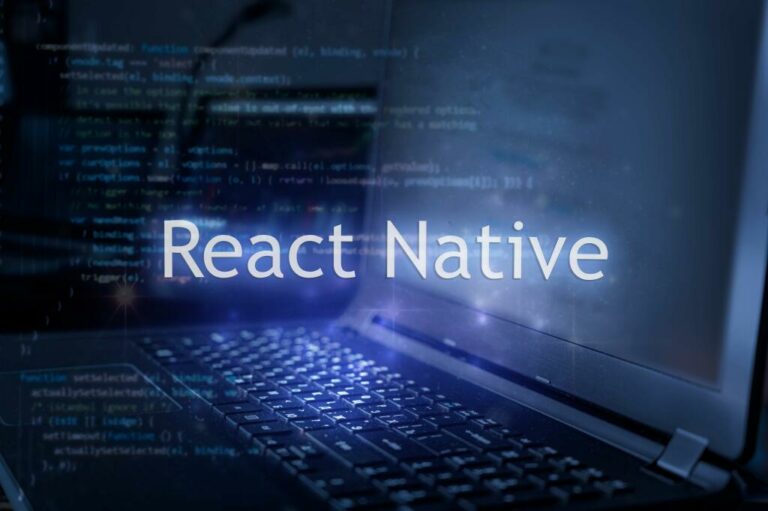Videos de Sexo > Software development > How Do Progressive Web Apps Really Compare to Native Apps?
Descricao do video:
Content
- Features of React Native
- What Is the Difference Between a Web App and A Progressive Web App?
- The WebXR Device API has two goals that differentiate it from WebVR: support for new user inputs like voice and…
- Progressive Web Apps VS Native & Hybrid Apps: What’s The Difference?
- What are cross-platform apps?
- Generate App Icon and Splash Screen Images for Ionic Framework using Capacitor
- How Do Progressive Web Apps Really Compare to Native Apps?
- So Which is Better? Which Should I Choose?
The main difference between a progressive web app vs native is that now PWAs can be installed on desktop as well. This way, companies can increase their customer base by covering both mobile and desktop users. You only need one team of web developers to build a progressive web app, to create it.
Below we have listed the main drawbacks of progressive web applications. The time has come to take a closer look at the key advantages of progressive web apps. They will show how you can achieve your business goals with fast-loading pwa vs native pros and cons PWAs. The point is that a native app shows the content and the functionality it managed to cache when the connection was still there. This is available due to local storage and smooth data synchronization with the cloud. Windows Mobile and Blackberry all went “poof” quite spectacularly once Android gained traction.
This too follows the exact same philosophy as Firefox OS. Follow the standards API where you can, go custom when not available. On platforms that don’t have web apps as the first party, it becomes a cat and mouse game. Instability — On Android Chrome and on Chrome OS, PWA apps added to Home screen get installed on the https://globalcloudteam.com/ device. On Apple, it doesn’t matter as websites with the special meta tag that were added to home screen behave as apps only. It is cheaper, simpler and quicker to develop web apps vs native apps. While that looks a lot like something you would use for web development, PWAs are not just mobile versions of a website.
Additionally, PWAs have the advantage of being accessible via a link. This is mainly an advantage because it makes it easier for you to show the app to friends or colleagues, for example. Unlike a PWA that requires a custom payment processing solution, Native Apps can be monetized using in-built App Stores’ payment systems. The Native vs PWA debate will remain important – but it doesn’t have to be a competition. There are use cases for both, and it depends on what you want, and need out of the technology.
Features of React Native
Billion-dollar companies might not have a problem with this, but most developers and businesses just don’t have that luxury. Additionally, A PWA enables you to build a website that prompts your consumers to install your business app directly pwa vs native pros and cons from the browser. They don’t have to visit the app store and manually search for your app, as it’s the case with native apps. This makes your app more accessible and discoverable, giving it the best chance to reach your target audience.
- Apps PWAs can also be added to mobile home screens and offer an app-like user experience.
- You can easily deploy your updates without the need to wait for approval.
- If you already have a website you want to transform into PWA, it can be configured with the help of specific tools instead of development from scratch.
- Maintenance of native apps is truly hard, as you need to spend time searching for bugs on different platforms, as well as you have to plan and prepare the updated plan for each separately.
- If you are using the native app then you will need two different teams for it one for development and another one for maintenance correspondingly.
- Billion-dollar companies might not have a problem with this, but most developers and businesses just don’t have that luxury.
- For most use cases, PWAs can do the job and also be a much better investment — you don’t have to develop and maintain three separate code bases for Android, iOS and web.
The very first step to using the native app is downloading, and you can easily download it from the play store, then you can sign up for the account and access the features available inside. The Progressive Web App or simply the PWA is new in the context of web development. It was released and brought into the market with the intention of providing unmatched quality services as far as the mobile apps are concerned. Google wanted to improve the user experience especially that of the native apps. We place native apps on the app stores where people visit and download the app. A platform such as iOS even charges the developers for creating their app store account.
What Is the Difference Between a Web App and A Progressive Web App?
They are engaging because they offer a full-screen experience with push notifications and a home screen icon to access it. The native app is a regular mobile application, which the KeenEthics professionals have been developing for many years. A native app is developed only for a specific platform or device.
(standard OS gestures and app-defined gestures), notifications, and offline capabilities. Headless eCommerce stores that load fast and deliver seamless shopping experiences. PWAs are more secure when you compare them to normal website apps because they have to run with HTTPS. These protocols ensure that absolutely no exchanges between the server and client are hackable. If you have a secure environment you can be confident that when your customers enter their personal details or credit card, they are safe in doing so.
The Progressive Web Application technology has become popular since it offers a lighter way to build an app that works on all operating systems. Apps PWAs can also be added to mobile home screens and offer an app-like user experience. There won’t be an option for hardware acceleration, though animations will look just as smooth as native mobile apps. In reality, any business could develop the PWA solution to extend its digital footprint and guarantee an enjoyable user experience. But, some businesses might think about developing a native app due to the benefits that the PWA does not offer. However, it’s up to your decision to choose which choice to make to meet your business objectives.
The WebXR Device API has two goals that differentiate it from WebVR: support for new user inputs like voice and…
This feature provides a better user experience and reduces your site’s bounce rate regardless of the network connection status. So now you know the difference between PWA apps and native apps from a developer perspective, it’s time to move onto the differences from a user point of view. There are also desktop PWAs, but they are much less popular than mobile PWAs. In fact, desktop progressive web apps offer little benefit over websites, so the development of such is a matter of personal preference. However, as this technology continues developing, it may open new opportunities and advantages, and, who knows, it might even become the future of desktop development.

They enable offline access to a website and, as a result, improve an app’s reliability and performance. Native apps are software designed to run on a specific operating system — either Android or iOS. They can only be downloaded from the Apple App Store or Google Play store. If you are already doing SEO work on a website, for example, this will also flow directly into the success of the PWA.
This is not there in PWA which has automated development process. The cost of building a native app is somewhat around $20,000 to $80,000, wheras for PWA, you only need to pay $6,000 to $20,000. Fewer API requests reduce your need for server capacity and bandwidth to support your application. Your customers will also use less of their mobile data plan while browsing your web app. Along with this, PWAs usually take up less storage space, so users are more likely to download them than native apps.
Progressive Web Apps VS Native & Hybrid Apps: What’s The Difference?
Some security factors like multifactor authentication will have to be developed by yourself in native apps. After the complete design, the native apps can’t be launched to the public instantly. The next procedure will get them approved by the app store on which the app is going to launch. This is a very long procedure that can take a time from a few weeks to months as well as it is also the risk of rejection due to copyright issues or plagiarism. Meanwhile, PWAs are the short name Progressive Web Apps which are mobile websites that are mainly designed to run inside the web browser. It can be designed in some languages like CSS, HTML, and JavaScript, and are that’s why multi-platform.

I had massive research to select Mobikul and now I’m sure it was the right one. For most use cases, PWAs can do the job and also be a much better investment — you don’t have to develop and maintain three separate code bases for Android, iOS and web. The emergence of this new wave of consumers will greatly benefit from the ability to access your product or service offline through a PWA. Because of the advantageous attributes listed above, the entire user experience is immersive and fluid. Dev, a brand top-level domain that’s dedicated to developers and technology. Manner, hybrid apps are made after combining two different elements.
Although PWAs are browser-run, they deliver better site loading speeds, UI/UX, and navigation than unoptimized websites. PWA can also be compared to application frameworks like Electron and Flutter. Electron is strictly a web app framework with disadvantages in application size and security that make it generally unsuitable for PWA development.
What are cross-platform apps?
It is mainly because they have to follow various steps such as visiting the app store, finding the app, accepting the terms and conditions, waiting to get installed etc. The result, as a research indicates, 20% of users pull away after every step. However, Google, who has developed PWA, has come up with the idea where you can install an app with just one click. Also, we’ll try to clear out when your business should build a progressive web app, and when a mobile app is a better option.
Microsoft Edge PWAs will feel more like native apps on Windows – Android Police
Microsoft Edge PWAs will feel more like native apps on Windows.
Posted: Wed, 25 May 2022 07:00:00 GMT [source]
You can optimize a native app for app store visibility, which is an additional traffic source. A PWA runs in the browser sandbox and its capabilities are already limited to this highly restricted and isolated environment. Therefore, it can only access the browser resources and what the browser allows. That isolates the app from the smartphone hardware and the user’s sensitive data.
Generate App Icon and Splash Screen Images for Ionic Framework using Capacitor
RN uses native rendering and other native resources to offer fast performance and improved user experience similar to native apps. Facebook created the framework to support cross-platform development using a single codebase. Similar to React for web apps, RN uses JSX syntax extension, a mixture of JavaScript and XML, to write declarative UI components. The framework also features reusable components for faster app development and state management to monitor component changes. They’re designed to offer a native app-like user experience with the comprehensive capabilities of a website.
To reach mobile users, you need to adopt PWA or Native App or both if your budget allows sufficient investment. These are the two most effective platforms for engaging mobile users. I would assume you know the popularity of native mobile apps in the eCommerce industry. Apps PWAs are an efficient solution for developers looking to reduce the time and money spent building mobile apps and internet sites. However, Progressive Internet Applications aren’t the most suitable solution for a hardware-intensive app that requires smartphone access to specific hardware.
PWA is not an actual app like the native apps are, it is a website application that resembles the app. PWAs also allow developers to focus on building the essential parts of their sites rather than having something developed by several developers, including native application developers. While these drawbacks might sound like a lot for some companies, it shouldn’t be too much of an issue for others because most businesses won’t need heavy customization. For instance, a business with many clients and customers won’t need to display the content of each message its app displays.
React Native also allows you to include your own native C++, Java, or Swift libraries where appropriate with a simple import statement. Things like background jobs, complex multithreaded image processing, or database access code are not outside your reach because you chose a high-level framework. Having a single codebase that is entirely web-based also means that a lot of the smaller annoyances that go with mobile development are taken off the roster. Gone are the days of tracking and squishing bugs for both versions of your app.
Titulo: How Do Progressive Web Apps Really Compare to Native Apps?
Duracao: 0:00
Categoria: Software development


